Conservatory ideas – 15 wonderful ways to boost light and space
A glass house will open up your home's potential


Kaitlin Madden
Looking for conservatory ideas? Our love affair with conservatories can be traced back to the botany-mad Victorians, who would retire to their ‘glasshouses’ to cultivate rare and exotic plants.
Since those days, design, technology and engineering have come a long way, making the once-traditional conservatory one of most flexible rooms in the modern-day home. Efficient heating and air conditioning systems, plus heat-control glass and insulated window treatments ensure the space is comfortable year round, making a conservatory suitable for a home office, play room, dining room, or to use as a relaxed living space.
Below, we bring you conservatory ideas, both traditional and modern.
Conservatory ideas
The informality of a conservatory is perfect for modern-day living and, as interior designer Steven Payne of Maison AD explains: 'I’m often asked to design conservatories that open up the back of older houses. Well-planned sunroom ideas bring the outside inside so that even on chillier days you can still enjoy a sense of being outdoors.’
1. Take inspiration from nature
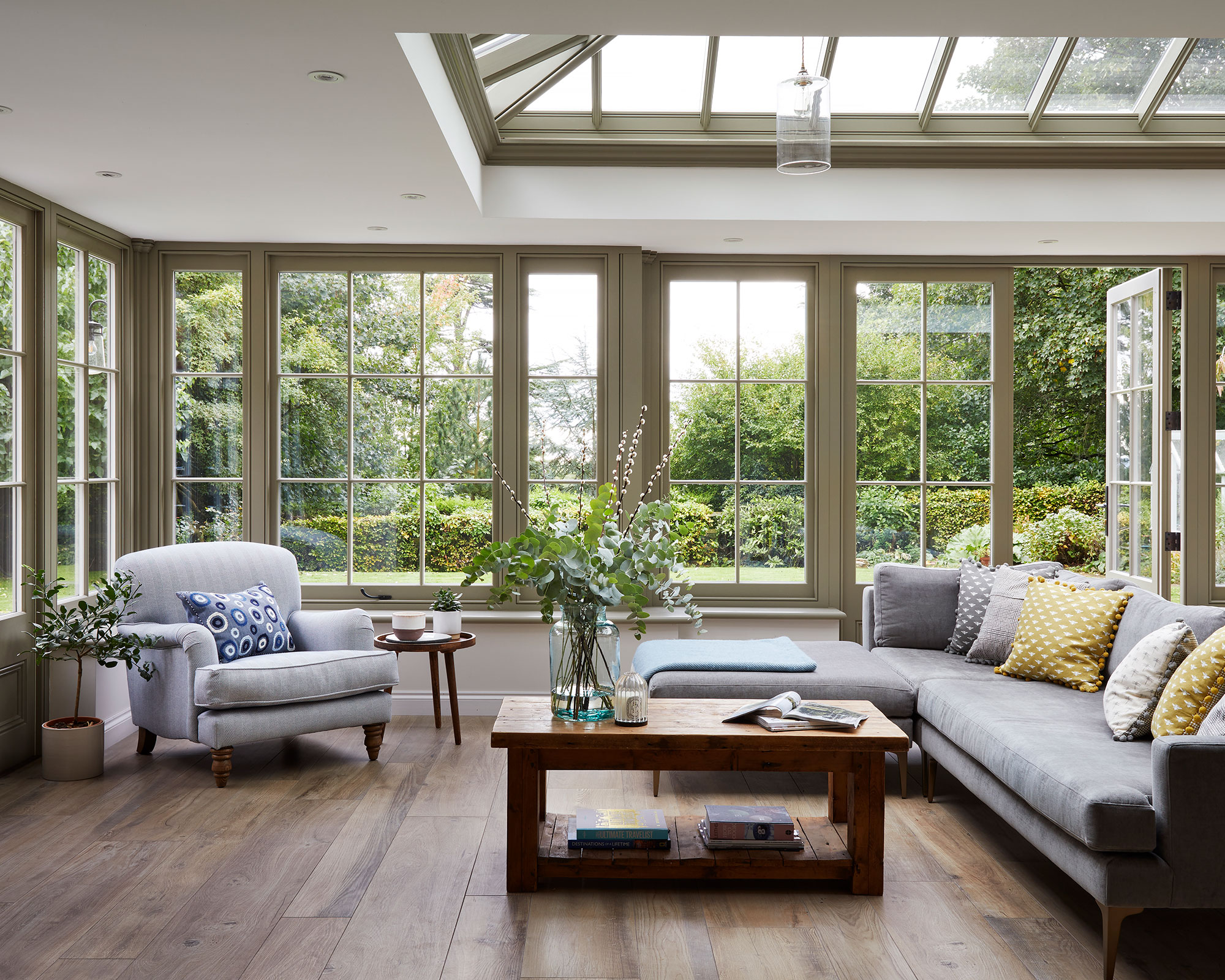
If you are looking for home addition ideas with a view of the garden but a deep connection to the house, a conservatory should be high on your list. Careful styling and clever color choices can transform a conservatory into a true restful retreat from which to enjoy the glorious garden views.
‘This space boasts super large double doors on both the rear and side aspects that ease out into the garden for a harmonious indoor/outdoor lifestyle,’ says James Upton, Managing Director and Designer of Westbury Garden Rooms.
2. Create an ad hoc spot
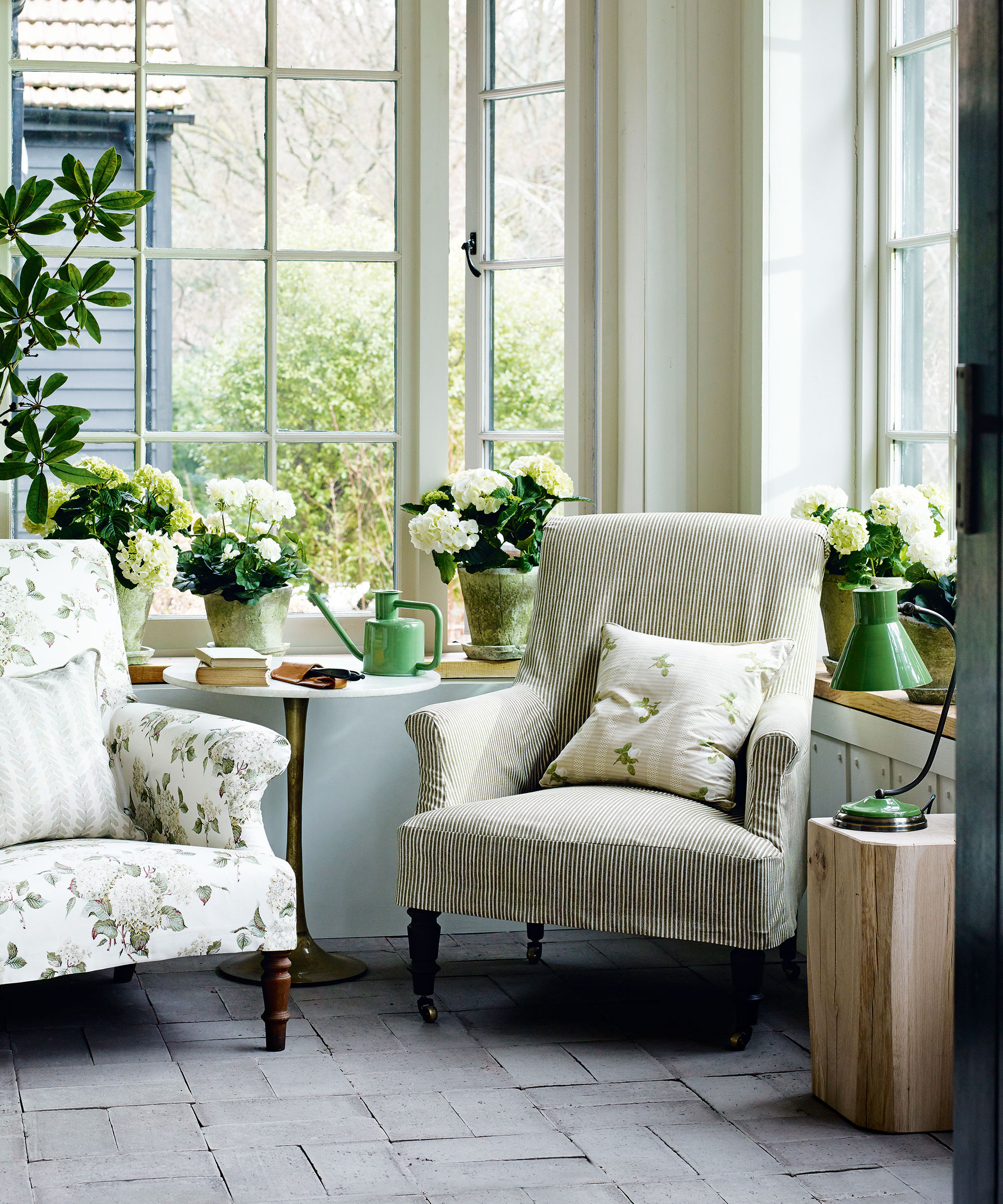
If adding a conservatory would require planning a home addition, consider adapting shed ideas or a greenhouse to your needs instead.
While most people use their greenhouses for horticultural reasons, as you would expect, many are using their greenhouses in a more multifaceted way introducing living, relaxation, dining and lifestyle elements into their greenhouse or garden room use. The same goes with sheds.
While these spaces may be too warm for some, you do have the added benefit of being able to set your greenhouse right in the middle of your backyard or garden, so you can feel fully enveloped by nature.
3. Choose a traditional style conservatory
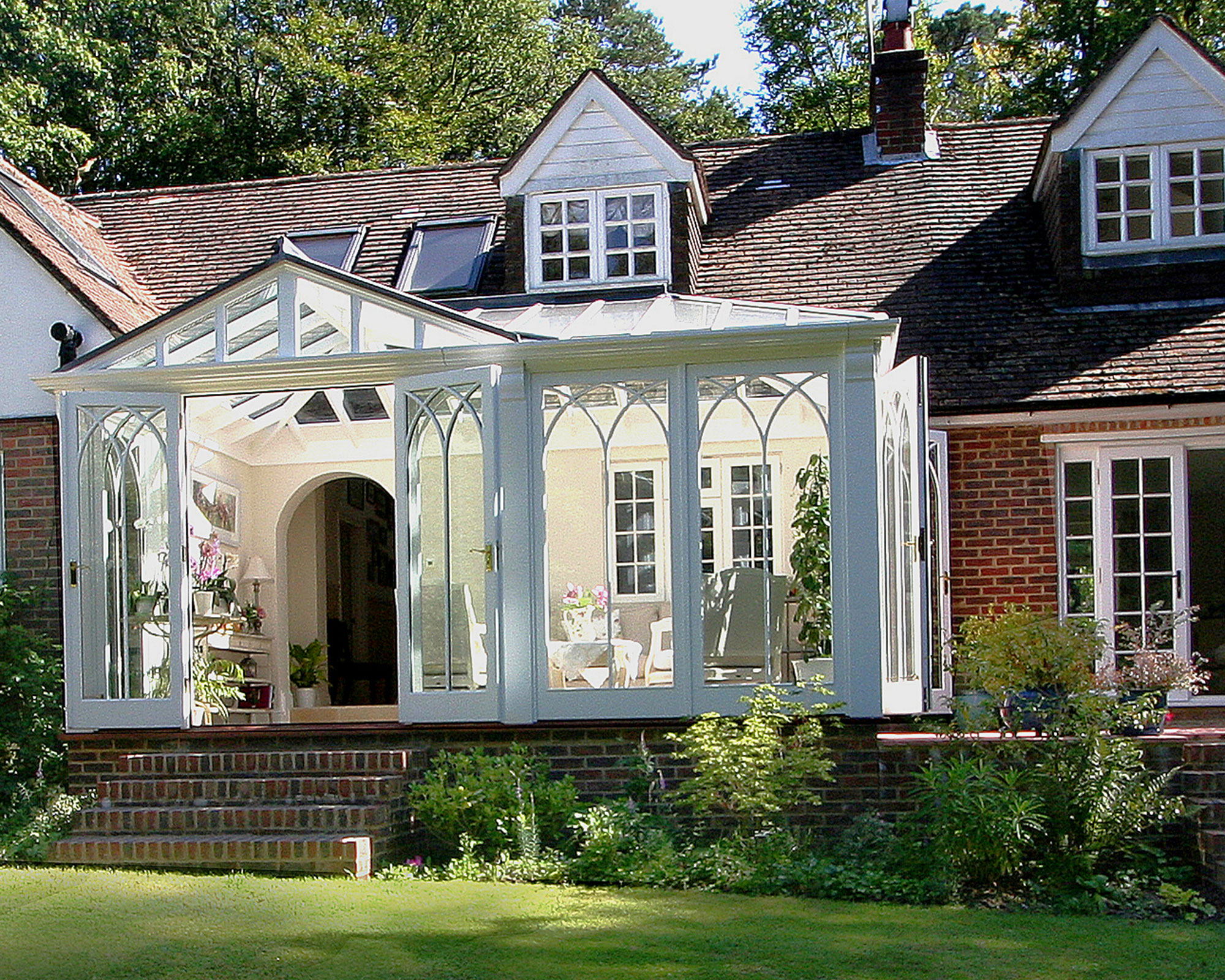
Many house styles lend themselves naturally to classic white conservatories. These white frames not only look beautiful from the outside, they help bounce light around. While uPVC frames were popular for many years, painted wood is becoming a stronger choice.
‘Traditional sustainable hardwoods are recommended,’ says Mark Wild, designer at Malbrook. ‘New ultra efficient eco glass specs will also future proof the new extension to add value to any home.’ Add further interest with decorative frames, such as gothic arches.
4. Or, go completely contemporary

If your conservatory ideas are contemporary and to be a new addition, maintaining the architecture of the main portion of the home creates a seamless flow.
'There are many design considerations when planning a conservatory,' says Evan Cohoe of Conservatory Craftsmen. 'The biggest it the existing architecture. When you hear conservatory most think of something Victorian but we can also go ultra modern,' like they did for this conservatory at a modern Minnesota home.
5. Double up
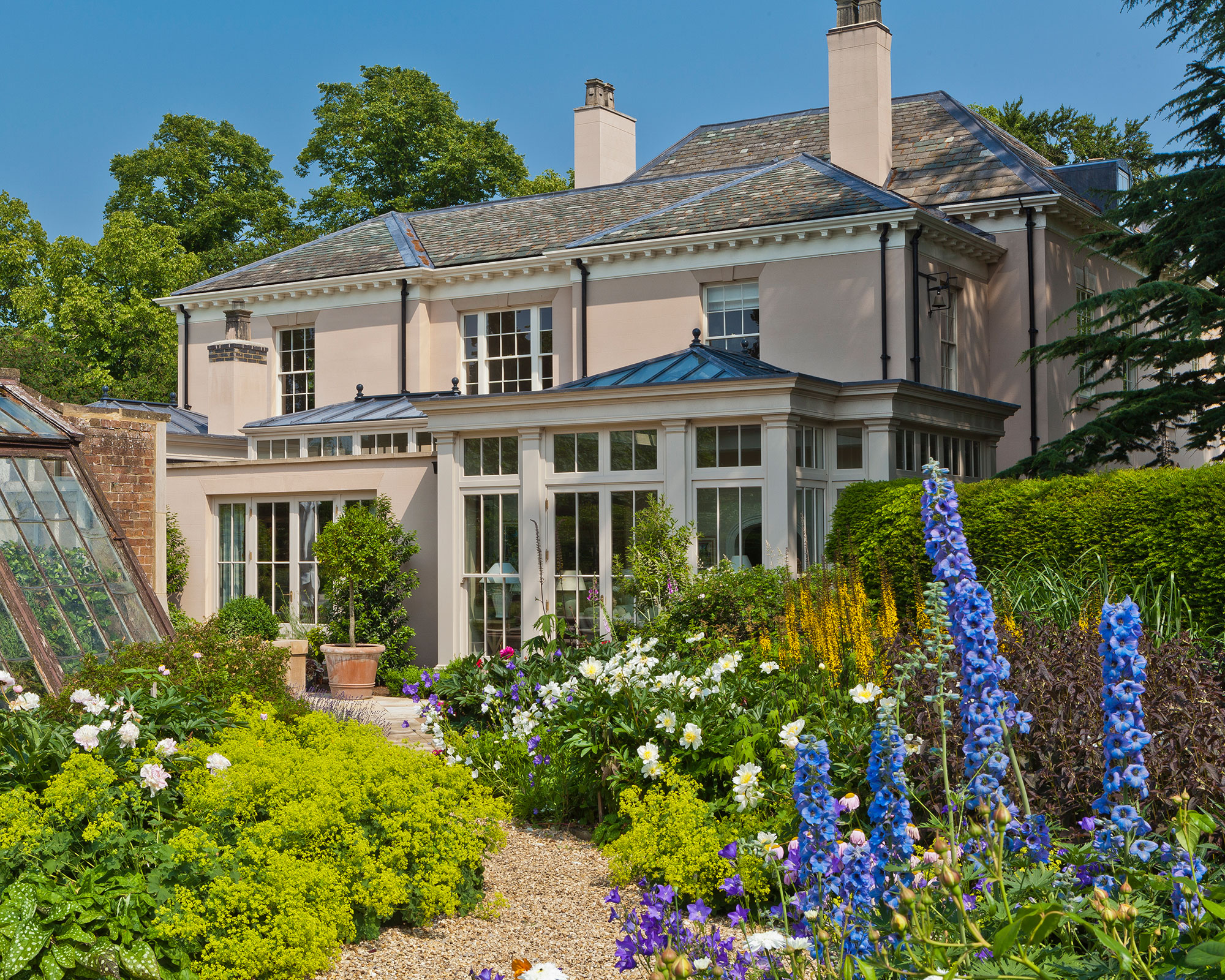
Why have one conservatory when you can fit two? Double up on your conservatory ideas by building two styles to achieve the best of both worlds. In this elegant project, there is a classical orangery on one side, incorporating full panel sliding sash windows within a framework of decorative pilasters and entablature.
‘The main orangery provides a living room from which to enjoy spectacular views of the garden. Adjacent is a more solid construction housing sliding doors and a roof lantern, which provides a formal room for dining,’ says Lisa Morton, Director, Vale.
6. Opt for a wooden structure
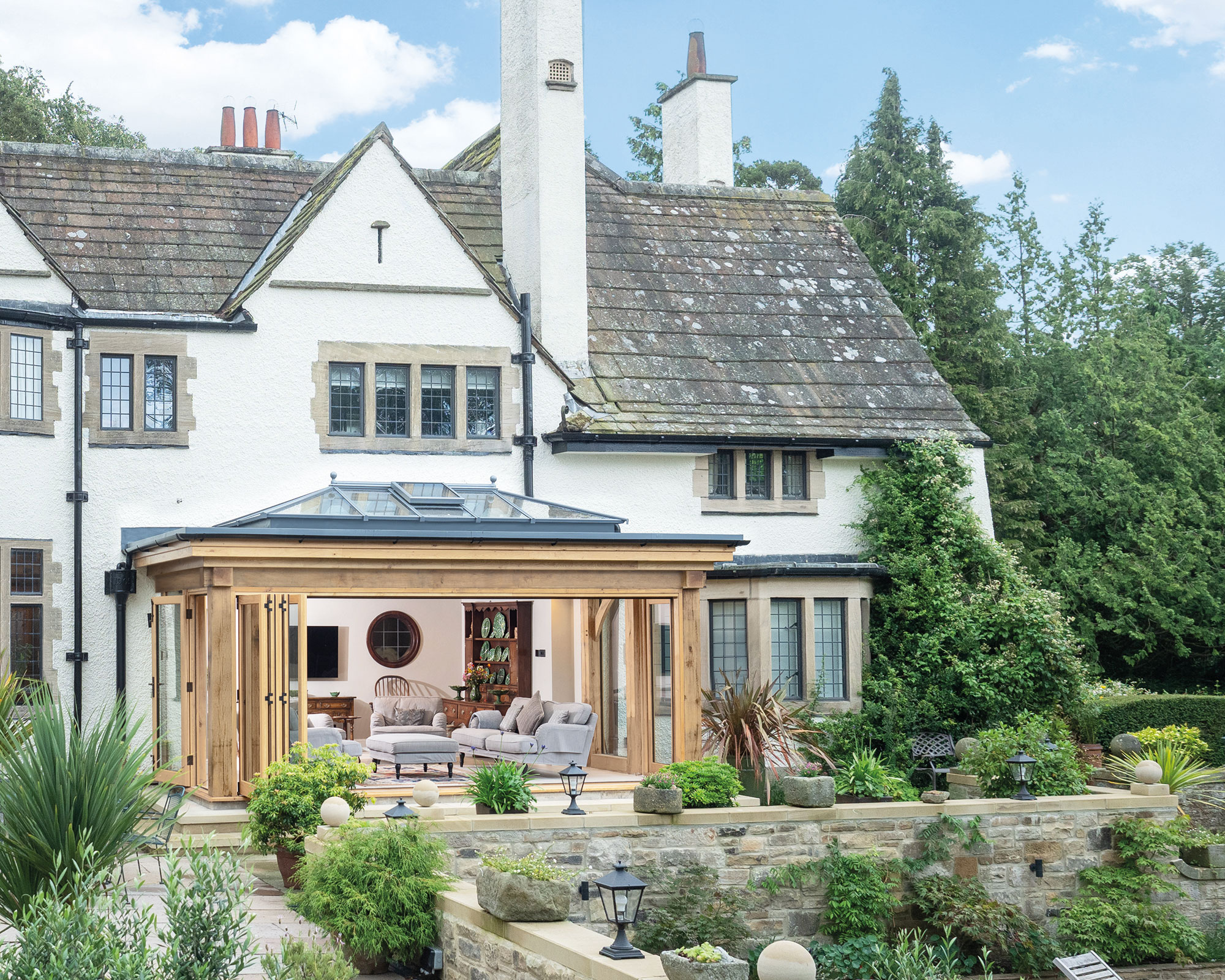
Oak conservatories are a wonderful choice, especially for homes in the country. ‘Oak has been used for construction for centuries due to its remarkable beauty, strength and durability,’ notes Jonathan Stackhouse, Planning Manager at Prime Oak.
‘A timeless material that matures gracefully over time that also offers a sustainable eco-friendly solution, designed to be enjoyed for lifetimes to come. Today oak still provides unrivalled quality and a well-maintained oak building would add value to any property, regardless of its age. To help maintain and keep the building looking new, we recommend an oil based waterproof coating, usually to be reapplied 1-2 times a year, as required.’
7. Capitalize on a view
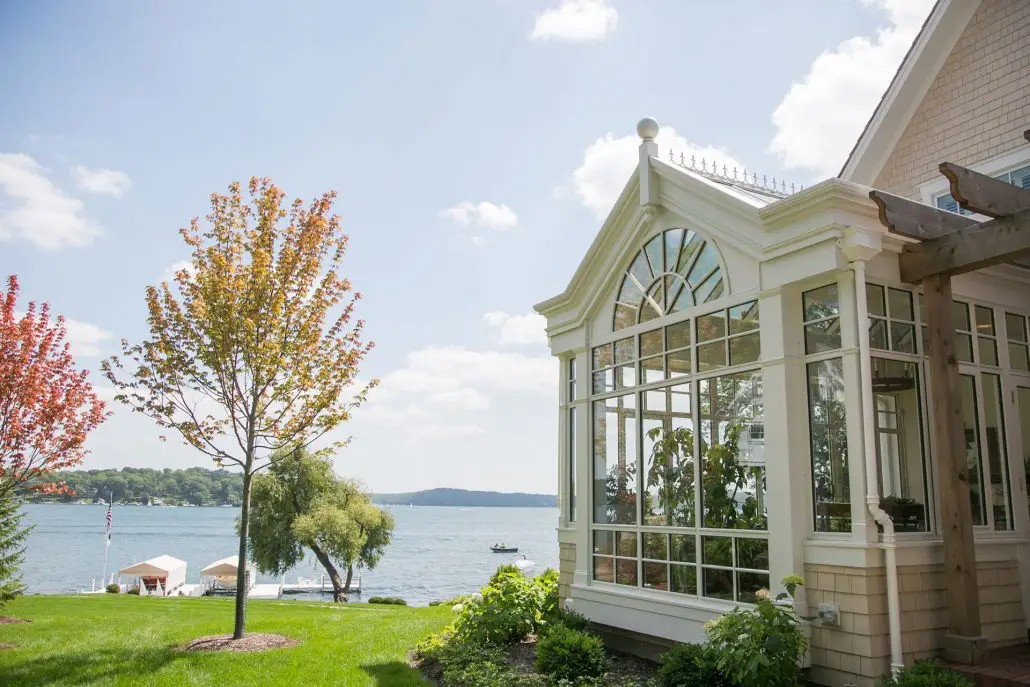
A conservatory is the original room with a view, so it makes an excellent choice for a home addition in a panoramic setting.
'This room was intended for dining, housing greenery and gazing out at beautiful Lake Geneva,' says Evan Cohoe of Conservatory Craftsmen, about this Minnesota home. 'This is technically an orangery. In the summer the plants live on the patio terrace. In the winter the plants are pushed in. This is the way the Victorians used orangeries also.'
8. Be sympathetic to the main building
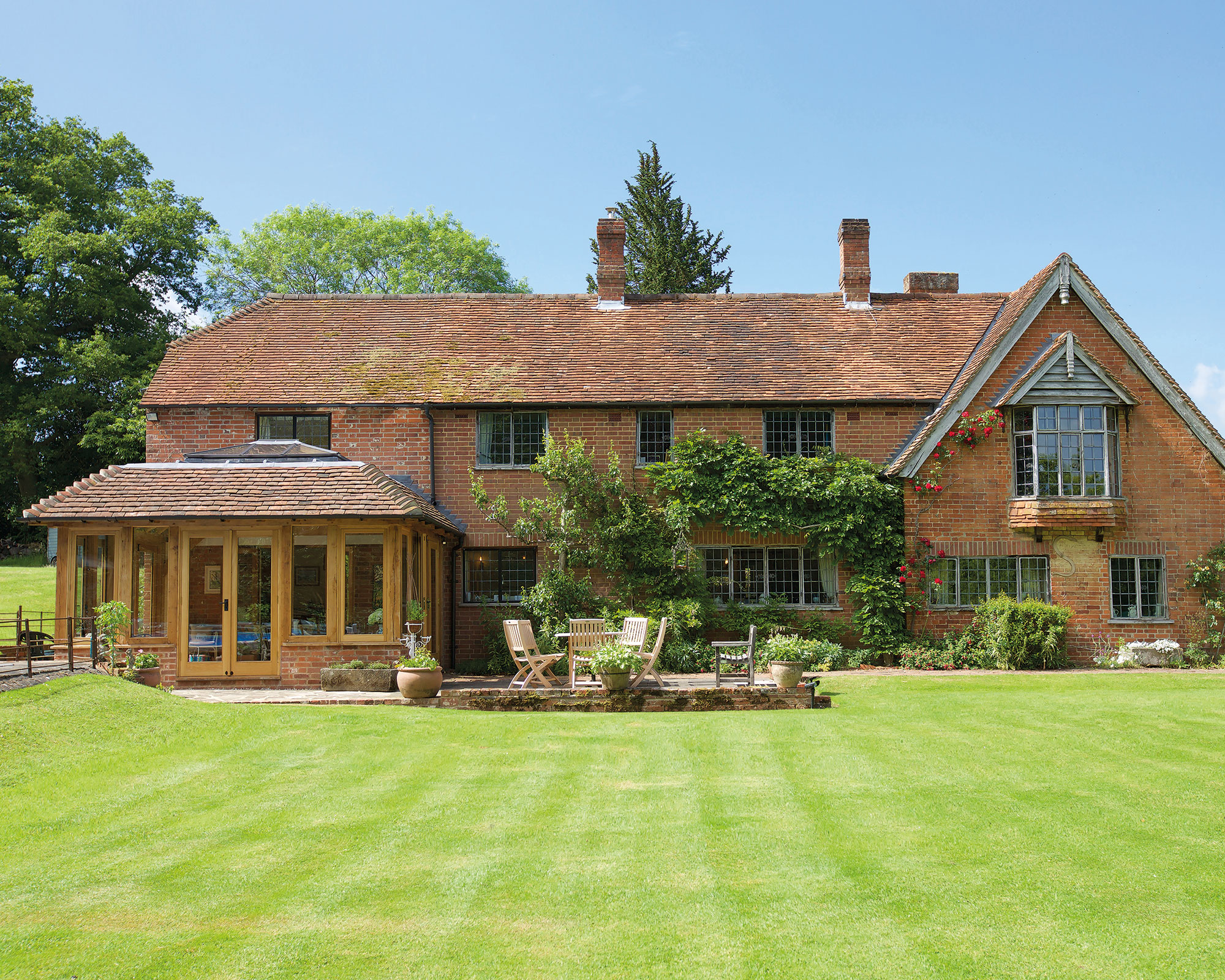
Historic homes can often benefit from the addition of a light enhancing conservatory, as they often feature small windows resulting in dark rooms, but ensure you are careful.
‘A successful orangery design on a period home should not over-dominate the appearance of the existing building but be visually subservient to it,’ says Jonathan Stackhouse, Planning Manager, Prime Oak. ‘Oak framing utilizes traditional construction and carpentry methods which local authority planners often welcome in period settings.’
This project from Julius Bahn also carefully matched the new roof to the existing roof tiles in order to blend harmoniously with the existing home.
9. Boost light with a roof lantern or skylight
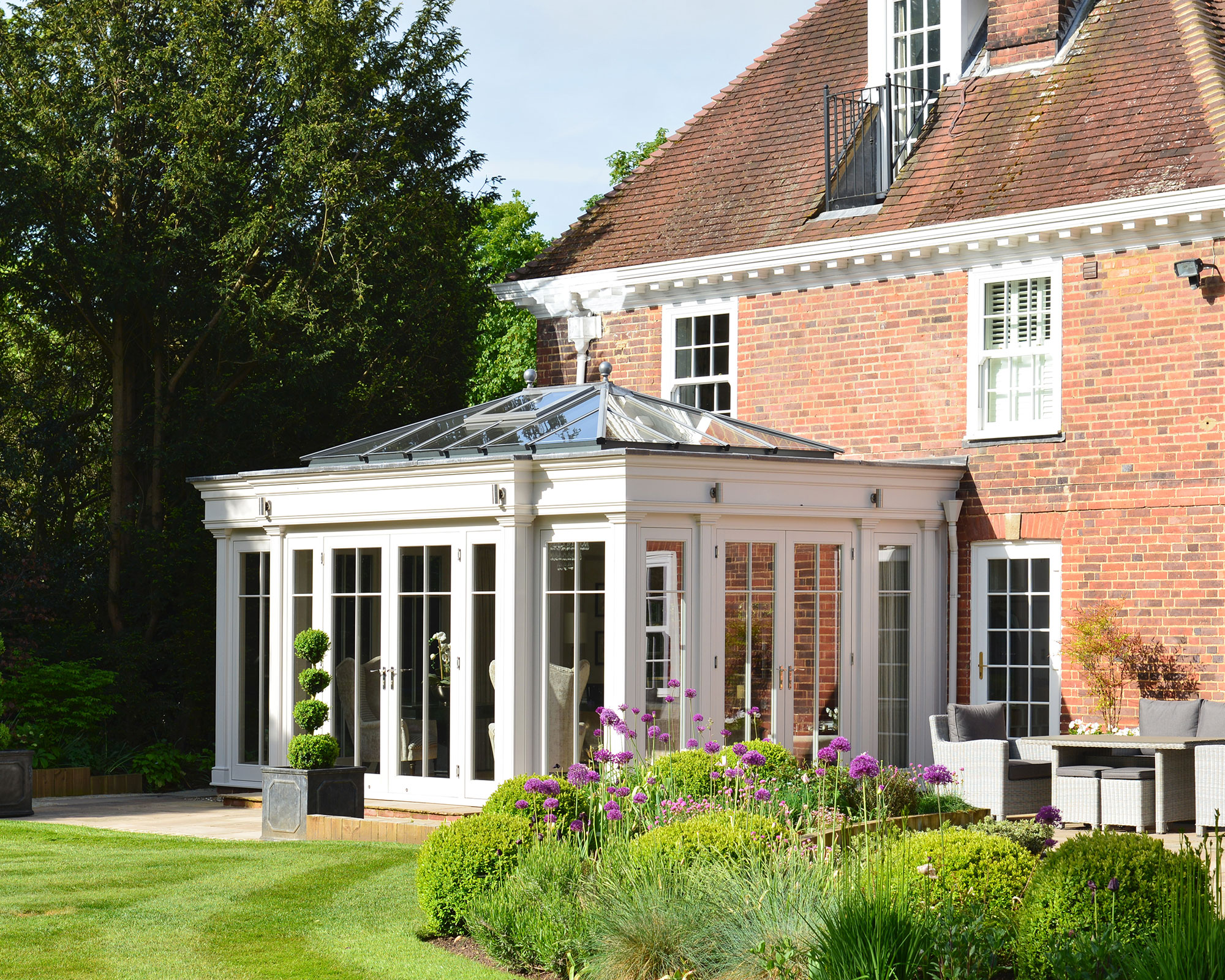
One of the most common reasons to build a conservatory is to boost the amount of light that enters a home, and exactly how much extra light you want will depend on the intended use of the space.
‘Orangeries with roof lights are ideal for kitchens as they provide a controlled amount of light through the roof and an opportunity to focus this above a kitchen island or dining table; whereas a conservatory, with its typically fully glazed roof will be the ideal design for plants to thrive,’ notes Karen Bell, Sales Director at David Salisbury.
10. Dress the windows
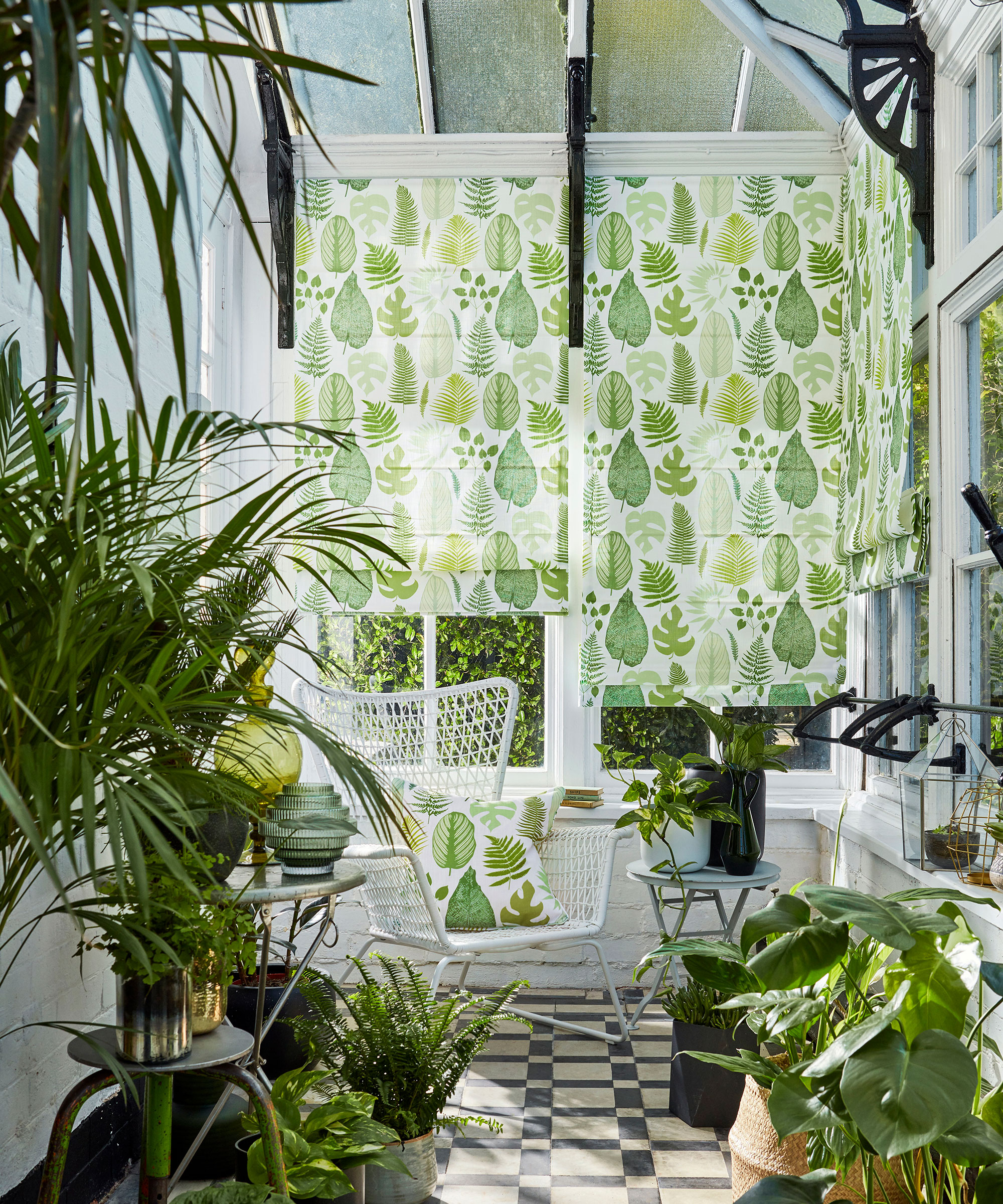
Adding blinds into your conservatory not only adds an extra splash of beauty to the space, but will also help the space to be as functional as possible.
‘As your conservatory is likely to be the brightest room in the house, you’ll need blinds that adequately cut out enough sunlight to ensure the room is habitable in summer and on those blindingly sunny winter days too,’ says Leah Aspinall, Head of Design at Blinds 2go.
‘Another consideration is the heat. As conservatories tend to be mostly glass, they can get extremely hot in the summer months and cold in winter without adequate window coverage,' she says.
11. Make it modern with a glass box
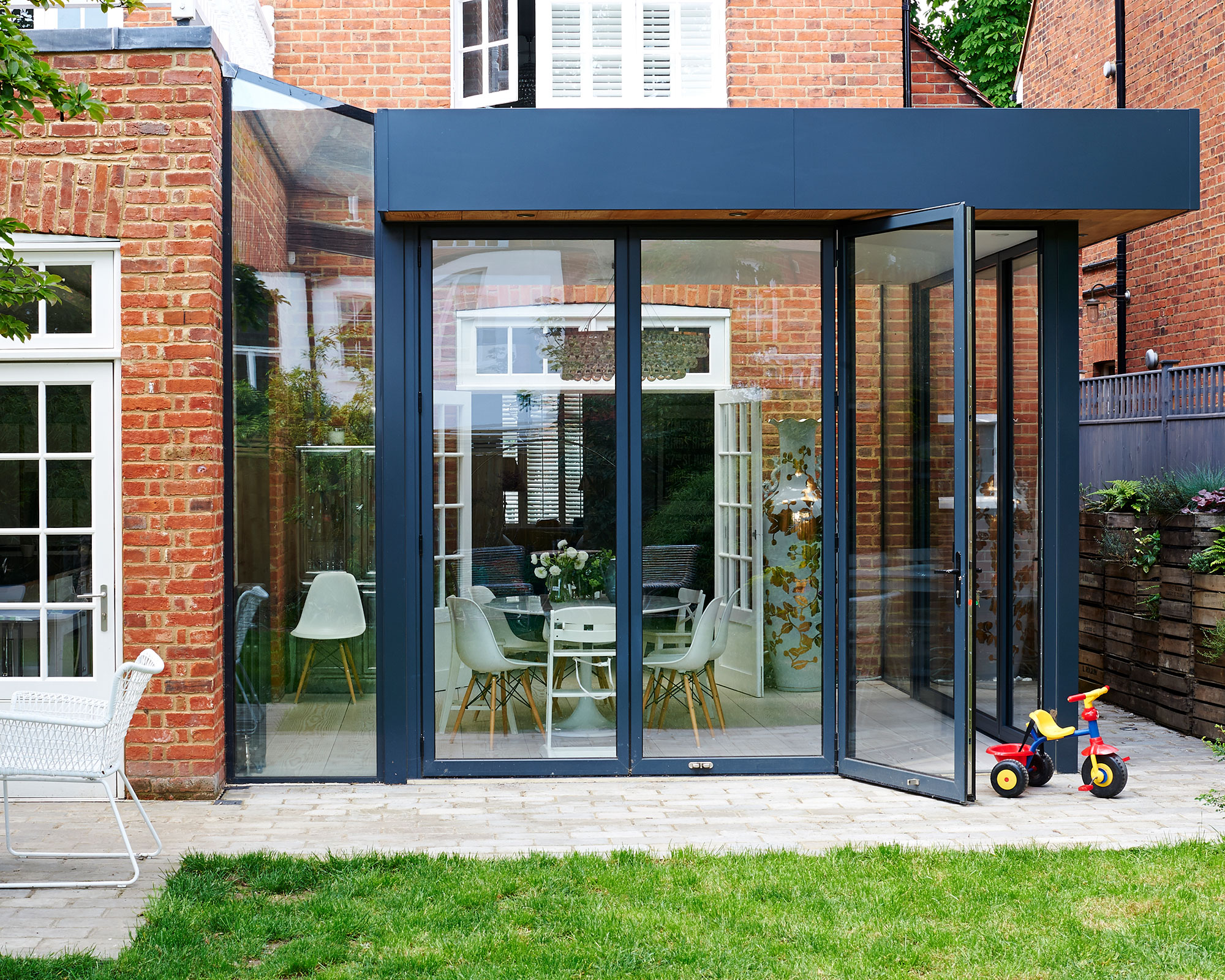
From modern box to traditional conservatory, a glass-walled addition will boost your living space, brighten your home and provide a greater connection between indoors and out.
There is now a huge variety of high performance glass available, designed to improve energy efficiency and control solar glare. The type of structure and direction in which it faces will dictate what type of glass is most appropriate. ‘A north-facing conservatory will have a different glass requirement to a southwest-facing one, simply because it is exposed to less direct sunlight,’ says Lee Vaughan, managing director of Breckenridge Conservatories.
12. Opt for a sunroom addition
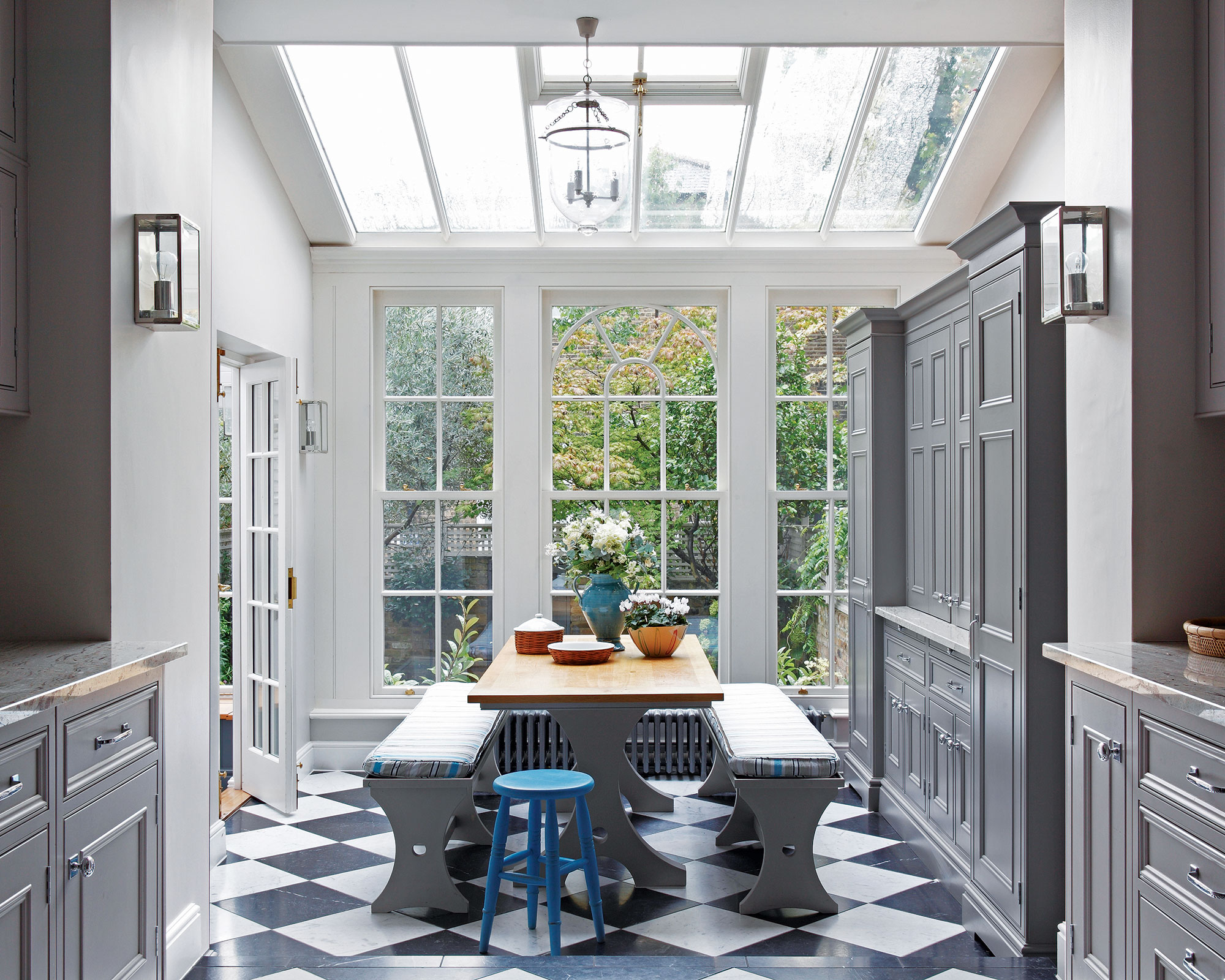
A conservatory doesn't have to be an addition, it can also be a freestanding structure. Building a conservatory out in the garden allows it to double as a potting shed or greenhouse.
13. Create a space for rest and relaxation
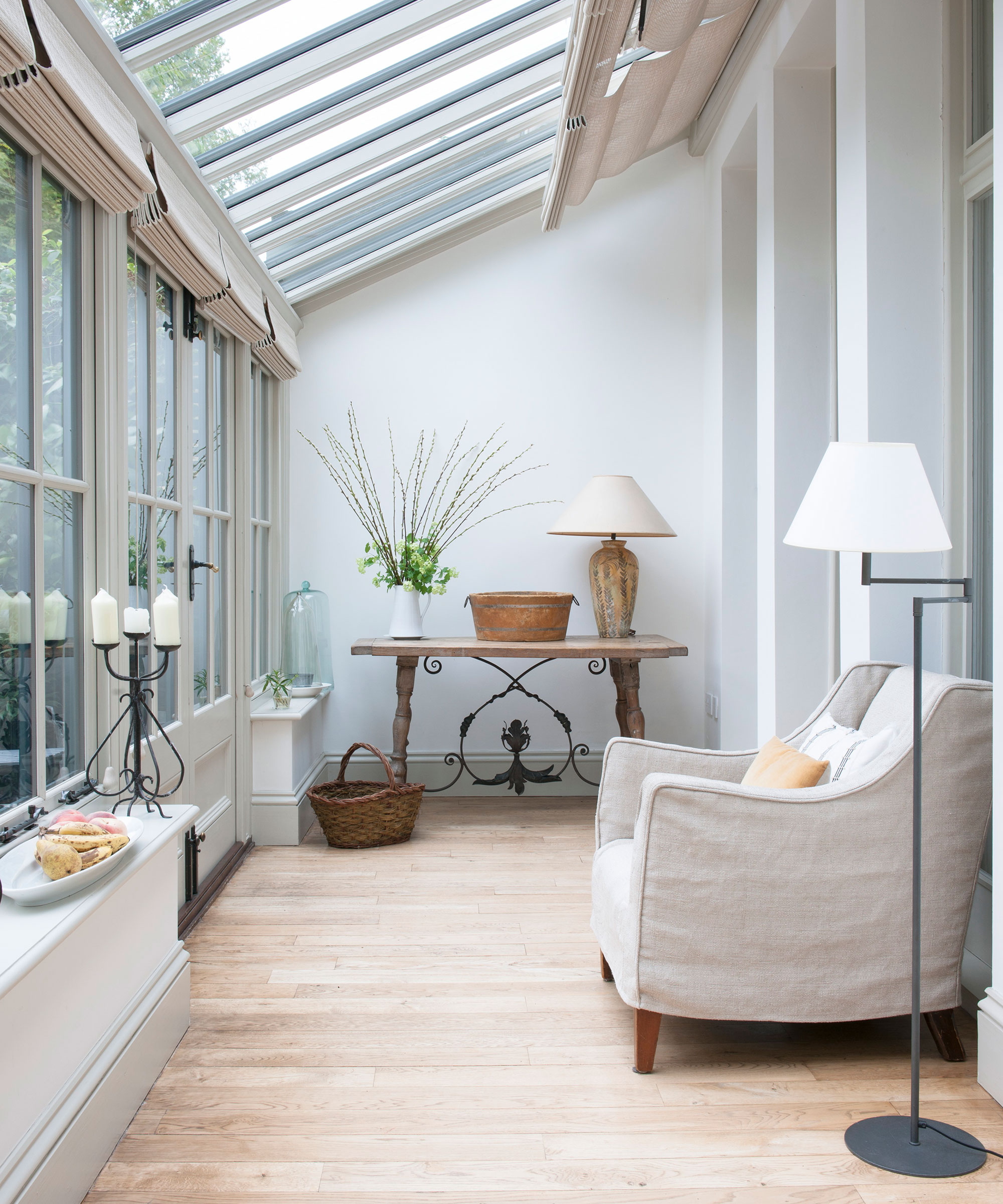
The defining feature of a conservatory paints this option as a bit of an add-on as opposed to integral part of the building. A conservatory should have a lockable door to the main house and not share heating and plumbing services. But most conservatory specialists are happy to build conservatory-style extensions that flow with the main house and which have connected services that can support a kitchen, and certainly a comfortable living, dining or office area.
'Years ago, homeowners simply had a conservatory bolted to the back of their homes as sunrooms for use during warm weather,' says Paul Schofield, Apropos' technical sales manager. ‘These days, conservatories and other glass-heavy home additions are a fully-integrated part of the home thanks to improved thermal ratings, so homeowners can use and enjoy them all-year round.'
Conservatory structures are usually made of uPVC, wood or aluminum, with all three available in a huge range of colors.' The choice is mainly aesthetic,' adds Paul, ‘although aluminum is particularly strong, yet light and is also resistant to corrosion, unlike wood which will require maintenance.'
14. Optimize an indoor and outdoor space

A successful addition can dramatically improve your lifestyle – and the value of your home. Whether you’re based in the town or country, there’s a solution to suit every property. Here wall-to-wall modern glazing at the back of this rear extension completely opens up the kitchen-diner-living room to the garden. Continuous stone flooring inside and out link the interior to the outside space. Adding a conservatory or orangery to the back of a period property may require planning permission.
15. Make more living room
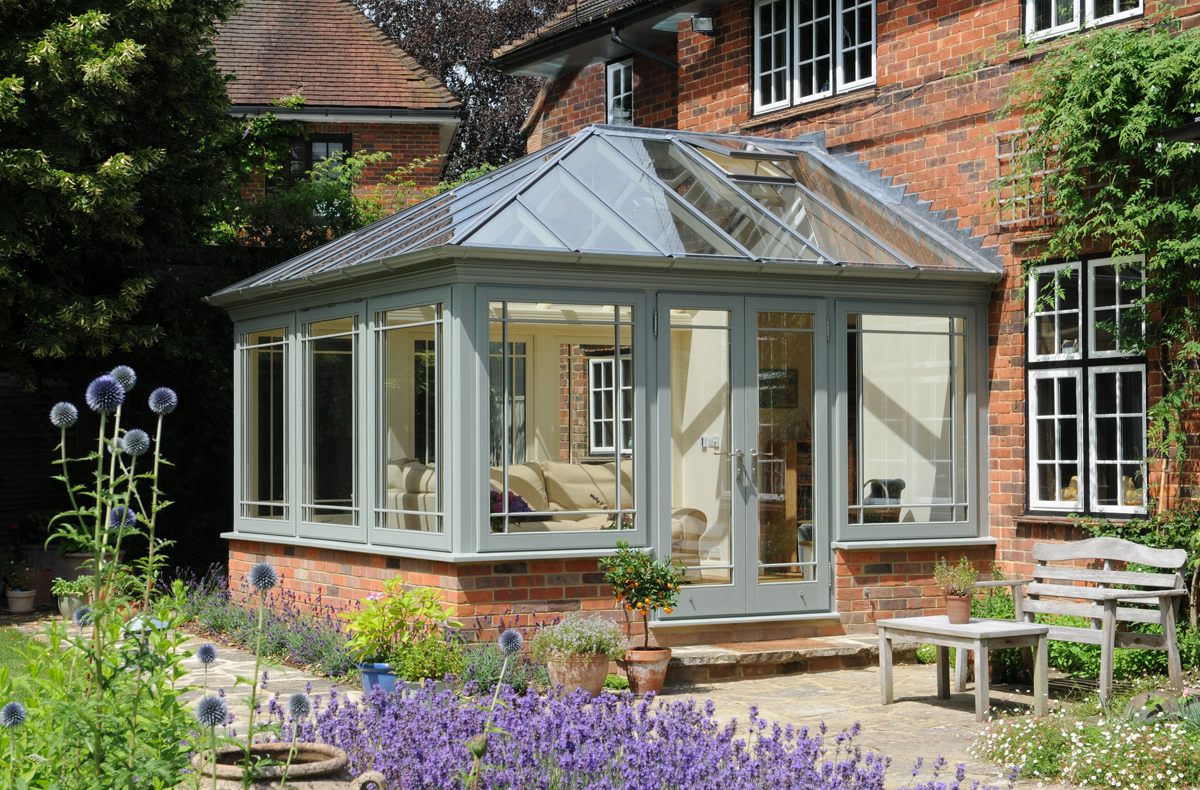
There are plenty of creative ways to use a conservatory, but they're also suited to meet the simple need for more living space.
Paul Zec, of Parish Conservatories in Connecticut, says he's quoted conservatories for use as aviaries, orangeries, and pool shelters, but the company designed the space above as a living area for a homeowner that wanted a sunny room to relax in.
How to choose the right conservatory?
While the range of conservatory styles – from Victorian glasshouses and Edwardian pavilions to minimalist boxes – has never been wider Mark Jones, of Town and Country, specialist in bespoke designs, says the market is dominated by two distinct looks.
‘On the one hand we still have lots of requests for traditional Victorian conservatories which look wonderful in a range of settings. On the other side, we are increasingly being asked to design a more hybrid, orangery-style structures. Typically these have solid timber or masonry walls with semi glazed roofs and tall windows or folding doors opening on to gardens or patios.’
Proportion is key. ‘Cheaper kit-form conservatories are often made for new-build houses so the design will be dwarfed by larger Georgian or Colonial properties,’ explains Mark Jones.
Privacy is another priority especially if you live in dense areas where fewer windows may be a more prudent option.
You will also have to consider the location. The best planned conservatory will capitalize on views of your garden. Do you need storage? If so, then an orangery style with more wall space will be more practical then a fully-glazed construction. For larger open plan spaces, roof lanterns placed above separate eating and kitchen areas add definition.
Will a conservatory add value to my home?
According to the Chartered Institute of Surveyors, a conservatory can add at least 5 percent in value to your property but only, says architect Jeremy Preston-Jones of Malbrook Conservatories, if the scale and quality of the glasshouse matches your existing house.
‘I’d say that most of our customers spend between five to ten percent of the property value on their conservatories. So, if a house is worth $900,000 a budget of $90,000 is realistic.’
What are the types of conservatory available?
Whether you choose to call it a conservatory or orangery there is a range of styles and design features to choose from. What you pick should ideally reflect your house style.
If you opt for a bespoke design, one idea is to replicate features from your house, such as arched windows or gabled roof in the conservatory to link the two structures. There is no reason to be slavishly faithful to the period of your house either. A sleeker modern style on a farmhouse could work just as well as a more conventional model, provided the scale and silhouette is complementary.
Victorian
The quintessential Victorian house style bleeds into conservatory design, with features such as a pitched roof with ornate ridges and facetted front, like a bay window.
Edwardian
Often square or rectangular, the early 20th century conservatory is less ornate than Victorian styles with a flat sometimes pedimented front and more useable floor space.
Orangery
The classic orangery combines stone or timber walls and corners with tall windows and a flat roof with glass skylight.
Lean-to
The simplest shape with a single-sloped roof and the longer wall adjoining the house. Can be useful for filling in corners and to avoid taking up too much space in a small garden design.
Gable Fronted
A vertical and front and steeply pitched roof that can be plain or ornamented. The design creates a generous ceiling height.
P-Shaped
Typically combines a Victorian-style section with a lean-to structure to make the P-shape.
T-Shaped
A symmetrical design featuring a larger middle porch section and wings that make a T-shape.
Lantern
Featuring a two-tier conservatory roof, the overall impression is of height, light and grandeur.
Do you need zoning or planning permission to build a conservatory?
In the U.S.
In most instances, if the conservatory is extending the footprint of your home or requires moving walls, you will need building permits before breaking ground. The exact regulations and types of permits you will need depend on the city where you live, since these regulations are governed at a local level. Your town planning and zoning commission is the best resource for information on building permits for a sunroom or conservatory.
In the U.K.
The recent brouhaha surrounding the Government’s proposed relaxation on planning has drawn attention to conservatories. According to Jonathan Hey of Westbury conservatories, planning rules and building regulations are often conflated. ‘Planning permission applies to the look and size of a structure, not it technical specifications. Like any extension, the conservatory will be subject to planning permission if it exceeds the permitted development area around a property.
‘It’s vital that you check your contractor or designer is up to date with the latest regulations’ says Jonathan. According to the Conservatory Association, ggf.org.uk, planning permission is often not needed for a smaller domestic conservatories that meets the criterion listed below. However, rules are constantly being updated so always check with your local planning office.
Sign up to the Homes & Gardens newsletter
Design expertise in your inbox – from inspiring decorating ideas and beautiful celebrity homes to practical gardening advice and shopping round-ups.

Jennifer is the Digital Editor at Homes & Gardens. Having worked in the interiors industry for several years in both the US and UK, spanning many publications, she now hones her digital prowess on the 'best interiors website' in the world. Multi-skilled, Jennifer has worked in PR and marketing and occasionally dabbles in the social media, commercial, and the e-commerce space. Over the years, she has written about every area of the home, from compiling houses designed by some of the best interior designers in the world to sourcing celebrity homes, reviewing appliances, and even writing a few news stories or two.
- Kaitlin MaddenExecutive Editor, Homes & Gardens
-
 How to fertilize magnolias – garden experts reveal the secrets to better blooming, and timing is critical
How to fertilize magnolias – garden experts reveal the secrets to better blooming, and timing is criticalMagnolias are famed for their spring flowers, and feeding at the right time can give trees a boost
By Thomas Rutter Published
-
 Sarah Jessica Parker's spring tablescape epitomizes lived-in luxury with art deco candle holders and a statement tablecloth – it's easy (and affordable) to recreate
Sarah Jessica Parker's spring tablescape epitomizes lived-in luxury with art deco candle holders and a statement tablecloth – it's easy (and affordable) to recreateKick off the season right with a warm table that invites guests into your home by emulating Sarah Jessica Parker's luxe and cozy scheme
By Sophie Edwards Published